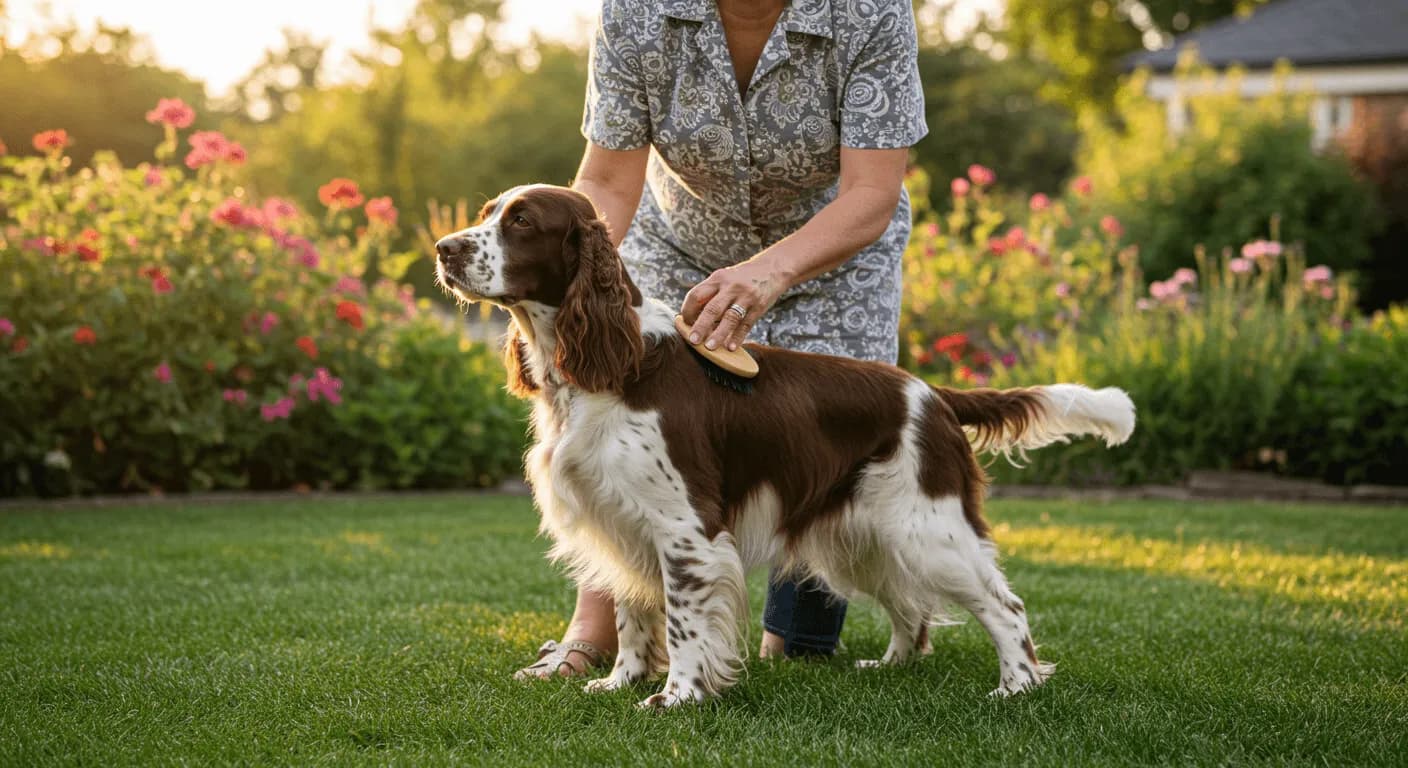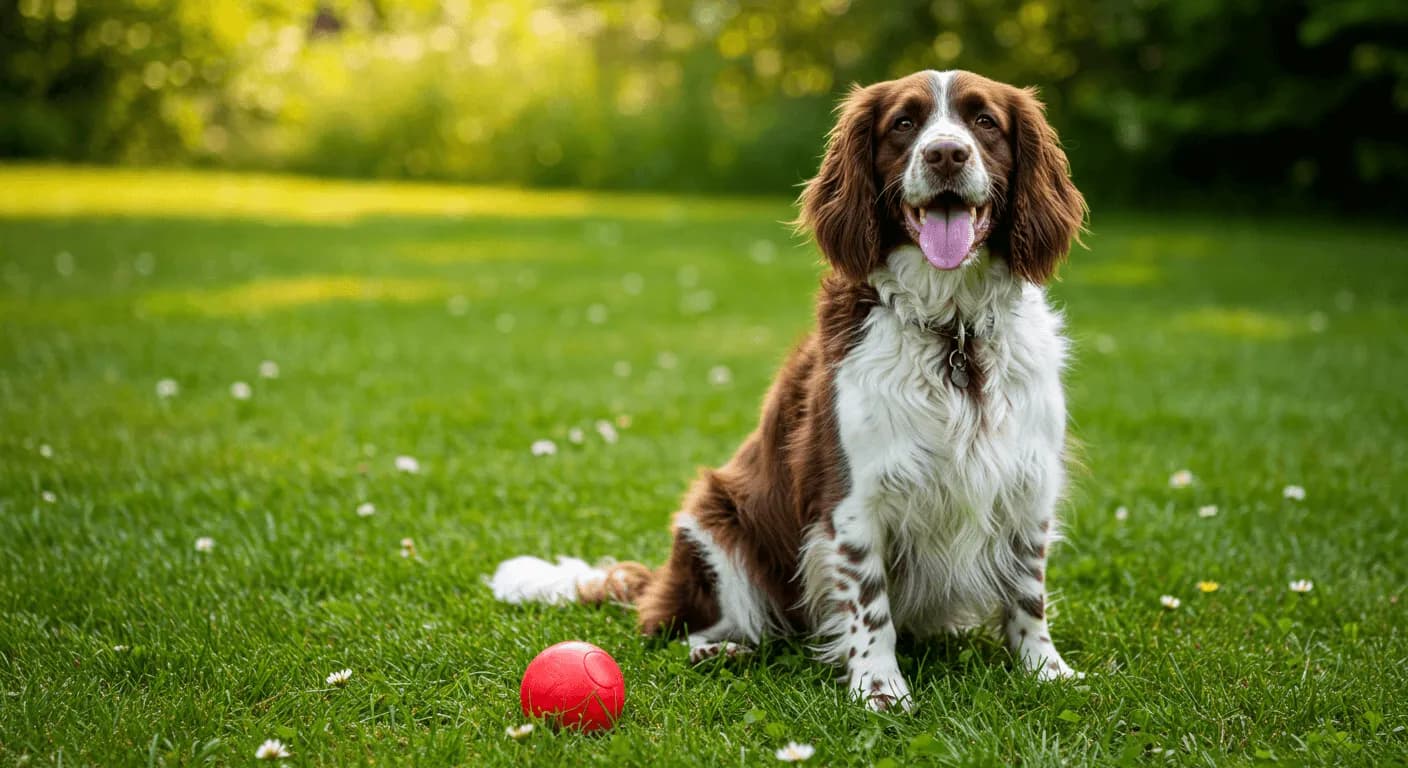English Springer Spaniels are a beloved breed known for their affectionate nature, high energy levels, and versatility as both family companions and skilled hunting dogs. Thanks to their intelligence and eagerness to please, they’re relatively easy to train, but their energetic disposition means they require attentive and consistent care. Whether you're a first-time owner or a seasoned pet parent, understanding the unique needs of the English Springer Spaniel is crucial to ensuring their happiness and health. This comprehensive English Springer Spaniel care guide walks you through everything you need to know—from grooming and health concerns to socialization, exercise, and ethical considerations surrounding ear cropping and tail docking.
Many people mistakenly believe that English Springer Spaniels are low-maintenance due to their medium size and friendly demeanor, when in reality, they require active involvement from their owners to thrive. Misjudging the breed’s energy level or grooming requirements can lead to behavioral issues or health problems down the road. With this detailed guide on how to take care of an English Springer Spaniel, you’ll be set up for a successful, lifelong bond with your furry friend.
1. Understanding the English Springer Spaniel’s Temperament and Needs
English Springer Spaniels are known for their cheerful, social, and energetic personalities. Bred originally for hunting and flushing game, Springers have retained much of their working dog instincts, which means they are happiest when they have a task or activity to focus on.
Personality and Behavior
- Intelligent and responsive
- Friendly and eager to please
- Loyal and attached to family members
- Can be overly excitable or anxious if not properly exercised or stimulated
These dogs thrive on interaction, whether it's a game of fetch, a hike through the woods, or just hanging out in the yard with the family.
Activity Level
Springers are high-energy dogs and require at least an hour of vigorous exercise per day. Daily walks, off-leash play in a secure area, and training games are essential for their physical and mental health. Without proper exercise, they may become bored and develop destructive behaviors such as digging, barking, or chewing.
2. Grooming and Hygiene Needs
Caring for the coat of an English Springer Spaniel is an important responsibility. Their medium-length, double-layer coat is both beautiful and functional, providing insulation and protection—but it can also be prone to matting and shedding.
Coat and Brushing
Their wavy or flat coat requires brushing at least 3-4 times a week to prevent tangles and reduce shedding. Pay particular attention to areas behind the ears, under the belly, and on the feathered legs, where mats can form quickly.
- Use a slicker brush or grooming comb with adequate spacing
- Professional grooming is recommended every 6-8 weeks, especially to trim feathers and clean up paws and sanitary areas
- Check ears weekly for debris or signs of infection
Springers are moderate to heavy shedders, especially during seasonal transitions.
Bathing and Hygiene
- Bathe your Springer every 4-6 weeks using a dog-specific gentle shampoo. Avoid over-bathing to prevent dry skin.
- Nail trimming should be done every 2-3 weeks
- Brush your dog’s teeth 2-3 times per week to prevent dental issues

3. Health Concerns and Veterinary Care
While English Springer Spaniels are generally healthy, they are prone to some breed-specific health conditions. Regular vet visits and early detection are key to a longer and healthier lifespan, which for Springers typically ranges from 12 to 14 years.
Common Health Problems
- Hip Dysplasia – A genetic condition affecting joints, which can be managed with weight control and supplements
- Ear Infections – Long, floppy ears can trap moisture, making regular cleaning essential
- Progressive Retinal Atrophy (PRA) – Vision loss over time; regular eye checks recommended
- Autoimmune Disorders – Some Springers develop conditions like hypothyroidism
- Springer Rage Syndrome – A rare but serious aggression disorder that usually manifests in show-bred lines
Vaccinations and Preventive Care
- Follow core vaccination schedule: Rabies, DHPP (Distemper-Hepatitis-Parainfluenza-Parvovirus)
- Annual wellness exams
- Maintain flea, tick, and heartworm prevention year-round
4. Should a English Springer Spaniel’s Ears Be Cropped?
The English Springer Spaniel's long, velvety ears are one of its signature traits. Cropping is not common or recommended for this breed and is not a breed standard.
What Is Ear Cropping?
Ear cropping involves surgically altering a dog’s ears for cosmetic purposes. It’s usually done when a dog is very young and entails removing part of the ear flap.
Ethical and Legal Issues
- Unnecessary for non-working dogs
- Painful and requires anesthesia and post-surgical care
- Banned or restricted in many countries and U.S. states
The natural floppy ear is both functional and aesthetically aligned with the English Springer Spaniel's personality. All reputable breeders and breed organizations recommend leaving the ears natural.
5. Should a English Springer Spaniel’s Tail Be Docked?
Tail docking has historically been associated with many working dog breeds, including English Springer Spaniels. However, the practice is increasingly controversial.
Background
Traditionally, English Springer Spaniels had their tails docked to prevent injury while working in the brush. Docking typically occurs within the first few days of life.
Considerations
- Prevents injury in active hunters or working dogs
- Considered unethical unless medically necessary
- Banned or limited in many countries
For pet Springers, tail docking is largely unnecessary and purely cosmetic. A long, wagging tail is typically healthier and more expressive of a dog's mood.

6. Should a English Springer Spaniel Be Muzzled?
In general, English Springer Spaniels are friendly and non-aggressive, and don’t typically need to be muzzled. However, there are circumstances where using a muzzle might be necessary or advisable.
Appropriate Use Cases
- Vet visits or grooming where the dog may be anxious or reactive
- When introducing your dog to new environments or situations
- If your dog demonstrates fear-aggression or has a bite history
How to Choose and Introduce a Muzzle
- Choose the right kind: a basket muzzle is ideal for prolonged wear
- Gradual introduction during training sessions
- Use positive reinforcement—associate the muzzle with treats and praise
Never use a muzzle as a substitute for training or as a form of punishment—it’s a temporary safety tool, not a solution for behavior problems.
7. Creating a Comfortable Living Environment
Springers are quite adaptable, but they do best in environments that allow for regular exercise and human interaction.
Ideal Living Situation
While apartment living is possible for some Springers, they generally thrive in homes with:
- A securely fenced yard for play and exploration
- Plenty of interactive toys and games
- Daily walks and mental stimulation
They are not suited for backyard-only lives—they want to be close to their humans.
Home Setup Essentials
- Soft bedding in a quiet, cozy space
- Interactive puzzle toys, chew items, and balls
- Access to fresh water and shade when outdoors
- A crate for training and sleeping, if used properly

8. Socialization and Family Compatibility
English Springer Spaniels are known for their affectionate and dependable nature around people. They are especially fond of children and typically get along well with other pets when socialized early.
Family Life
Springers are excellent family dogs. They’re playful with kids and gentle if taught proper boundaries. Their energetic nature means they make great playmates, but their excitement can be overwhelming for very small children without supervision.
Socialization Tips
- Introduce your Springer to a variety of environments, people, and pets from a young age
- Use positive reinforcement training to encourage calm interactions
- Teach polite greetings and how to settle in stimulating environments
Without proper socialization, they can develop separation anxiety, nervousness toward strangers, or impulsive behaviors.
Benefits of Early Socialization
- Reduced reactivity and anxiety
- Better relationships with other animals
- More confidence and obedience in new situations
Conclusion
Caring for an English Springer Spaniel is a rewarding journey filled with energy, affection, and companionship. While they may come with higher maintenance demands than some breeds—requiring regular grooming, daily exercise, and active social engagement—they more than make up for it with their loyalty, intelligence, and joyful spirit. By understanding their temperament, health needs, grooming requirements, and ethical considerations, you can provide a life of happiness and wellbeing for your Springer.
Whether you're training your Springer to be a family companion, a show dog, or a field hunting partner, consistency, kindness, and positive reinforcement are key. Always aim to nurture their natural strengths while addressing their physical and emotional needs. With the tips and insights outlined in this English Springer Spaniel care guide, you’re now better equipped to nurture a vibrant, well-adjusted, and deeply bonded canine companion.
Remember, responsible ownership is not just about meeting basic needs—it’s about enriching your Springer’s life and allowing their true personality to flourish. If you’re ready to commit, your English Springer Spaniel will undoubtedly repay you with a lifetime of love and loyalty.


